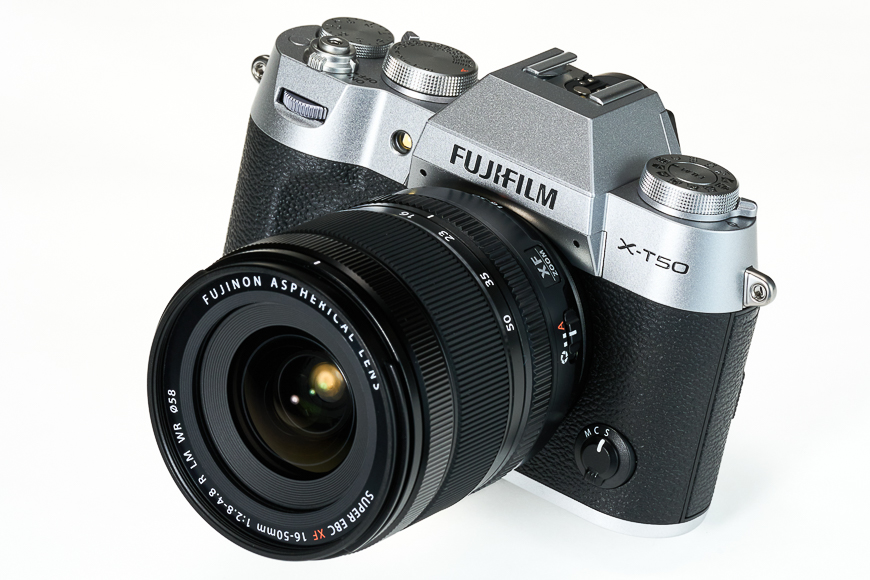
Thursday, 16 May, Fujifilm held one of its hotly anticipated Fujifilm X Summit events.
The global event, usually held in Southeast Asia, took place in Sydney, Australia, and featured five Australian photographers to promote the latest product launch.
During the live YouTube broadcast, Fujifilm product managers from Japan and Charlie Blevins from Fujifilm Australia announced the launch of four brand-new cameras and lenses.
Yuji Igarashi, Divisional Manager of Fujifilm’s Professional Imaging Group, and Makoto Oishi, Product Planning Manager, presented from iconic locations around Sydney.
Australian photographers Russel Ord, Rachel Claire, Shelley Pearson, Matt Krumins, and Tania Malkin joined the Fujifilm team as part of the presentation.
Each photographer talked of their experience with the new products in their professional genres.
In the Fujifilm X Series range, the much-rumored Fujifilm X-T50 surprised many with its high-caliber specs, delivering a digital mirrorless camera with close ties to the Fujifilm X-T5.
In addition to the X-T50, Fujifilm announced a new XF 16-50mm f/2.8-4.8 LM WR lens specifically engineered as a kit lens to work with newer 40MP X Series cameras.
From the GFX stable, Fujifilm announced the monolithic GF 500mm f/5.6 LR OIS WR super telephoto medium format lens.
Charlie Blevins, Fujifilm Australia’s National Events and Training Specialist, saved the biggest and best reveal of the day for last.
He showcased the all-new Fujifilm GFX 100S II medium format heavy hitter.
The live-feed YouTube presentation ran parallel to a real-life, hands-on experience for guests at an X Summit event in Sydney, Australia.
Fujifilm X-T50 Delivers a Significant Generational Leap
Fujifilm X-T50 + Fujifilm XF 16-50mm f/2.8-4.8 LM WR
The Fujifilm X-TXX series of digital mirrorless cameras is aimed at entry-level photographers looking for excellent image quality and ease of use.
The first X-T10 APS-C camera combined the styling and ergonomics of the Fujifilm X-T1 with reduced performance and capabilities for a simpler, cost-effective camera.
As the Fujifilm X-TX generations progressed, so did the popular X-TXX series with the X-T20, X-T30, and X-T30 II.
Surprisingly, Fujifilm didn’t release an X-T40 digital camera to offer a consumer-level companion to the highly acclaimed X-T4.
The generational skip has resulted in a significant jump in performance and capabilities in this new camera.
As a result, the X-T50 launch raises the question of what’s different between it and the flagship Fujifilm X-T5.
At a glance, the X-T50 and X-T5 have much in common.
Aside from the apparent similarities in the gorgeous retro-inspired aesthetics, they boast a 40MP X Trans CMOS 5 HR image sensor, X Processor 5, and IBIS!
The In-Body Image Stabilization, typically reserved for Fujifilm’s flagship cameras, delivers 5-axis stabilization up to 7 stops.
Fujifilm has earned a positive reputation for its core design principles and focus on the photographic experience.
Fujifilm X and GFX digital mirrorless cameras feature tactile physical command dials for exposure control.
The Fujifilm X-T50 features a significant Film Simulations control dial in addition to the Shutter Speed and Exposure Compensation dials.
The Japanese company is celebrating its 90th anniversary as a photographic equipment and consumables company with a reputation for gorgeous film stock.
Each Fujifilm X and GFX camera features baked-in Film Simulations that apply a filter to replicate the look and feel of current and historical film stock.

Fujifilm X-T50
The new Film Simulation dial appeals to photographers who desire a tailored analog film look to their images.
While the X-T50 includes 20 Film Simulations, the new Film dial reserves a place for the eight most common.
Additional Film Simulations can be programmed to the spare FS options on the dial.
“The brand new external Film Simulation dial is unique to the Fujifilm X-T50 and makes switching between Film Simulations easy, allowing the user to focus on composition and timing of capturing the moment”, said Shaun Mah, General Manager of the Electronic Imaging & Optical Devices Division of FUJIFILM Australia.
The Fujifilm X-T50 retains the user-friendly functionality of past X-TXX cameras by including the Auto switch, pop-up flash, and touchscreen controls.
However, don’t mistake this for a ‘basic’ version of the Fujifilm X-T5!
The X-T50 can record 6K video at 30p, has an AI-based subject-detection AF system, and has a maximum 1/8000 electronic shutter that delivers bursts of up to 8fps.
The lightweight 438g (0.97lb) body isn’t weather-sealed but is available in black, silver, and charcoal grey.
The Fujifilm X-T50 will launch on 17 June 2024 and retail for around $2,600 AUD ($1,740 USD).
For comparison, the flagship Fujifilm X-T5 retails for around $2,900 AUD ($1,940 USD).
Fujifilm XF 16-50mm f/2.8-4.6 LM WR – New Kit Lens!
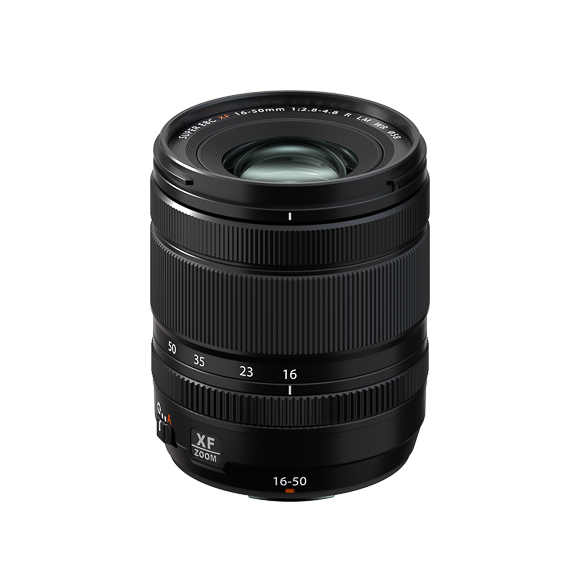
Fujifilm XF 16-50mm f/2.8-4.8 LM WR
One of the standout products featured at the Fujifilm X Summit 2024 Sydney event was the Fujifilm XF 16-50mm f/2.8-4.8 LM WR lens.
The new XF 16-50mm f/2.8-4.8 is clearly intended as a new kit lens to replace the aging XF 18-55 mm f/2.8-4 R LM OIS.
The highly acclaimed 18-55mm kit lens delivered exceptional optics and great AF performance in a compact, lightweight, and relatively cost-effective offering.
During the presentation, it was clear that the XF 16-50mm f/2.8-4.8 is the upgrade the newer 40mp image sensors deserve and require.
The Fujifilm XF 16-50mm f/2.8-4.8 is lightweight at 240g (0.5lb) and boasts a weather-sealed construction.
A critical difference between the XF 16-50mm and the older XF18-55mm is the zoom actuation.
While both feature Linear Motor (LM) drives, the new lens contains the zoom mechanism within the barrel without extending the lens length.
As a result, the Fujifilm XF 16-50mm f/2.8-4.8 retains its compact form and size of 65×71.4mm (2.6×2.8″).
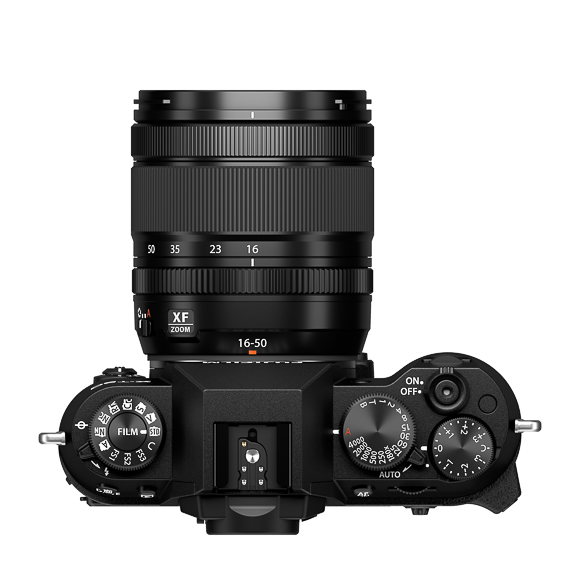
Fujifilm X-T50 + Fujifilm XF 16-50mm f/2.8-4.8 LM WR
“The versatility of the XF16-50mm lens has broad appeal and is the perfect lens for covering a wide range of photography, such as travel, portrait, and landscape. With a high-speed precision autofocus and at only 240g, it is a lens for all occasions”. said Shaun Mah, General Manager of the Electronic Imaging & Optical Devices Division of FUJIFILM Australia.
The 24-76mm full-frame equivalent focal length makes it ideal for everyday use, travel, or as a one-size-fits-all lens.
However, given its versatility, image quality, and focusing performance, it easily copes with portraits, landscapes, and family events.
The lens doesn’t feature Optical Image Stabilisation (OIS) as found with the older kit lens.
However, it’s not surprising, given that it’s intended for newer 40mp image sensor cameras with IBIS.
The Fujifilm XF 16-50mm f/2.8-4.8 LM WR will be launched on 17 June 2024 for around $1,300 AUD ($870 USD).
The Monolithic Fujifilm GF 500mm f/5.6 R LM OIS WR
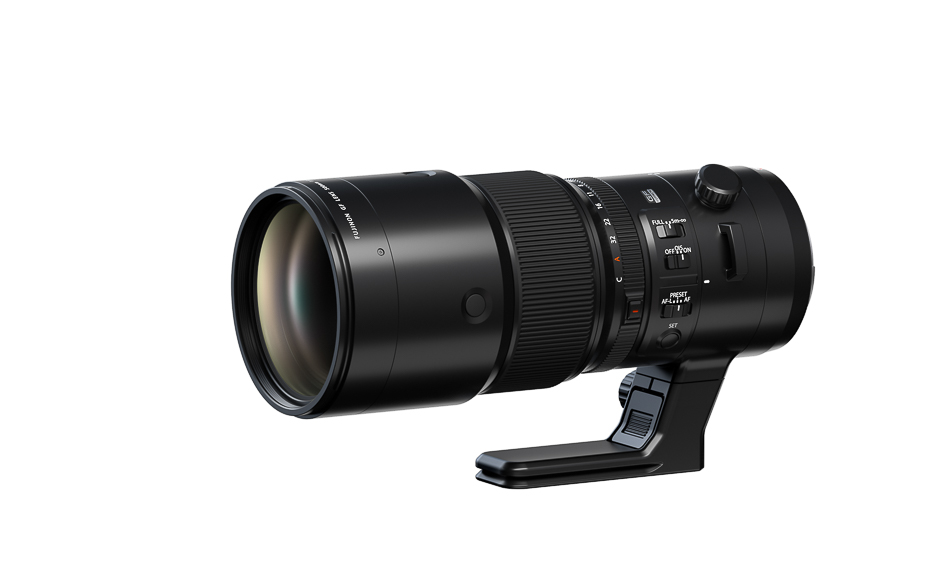
Fujifilm GF 500mm f/5.6 R LM OIS WR
In what can only be described as the unveiling of a giant, Fujifilm took great delight in showcasing the all-new Fujifilm GF 500mm f/5.6 R LM OIS WR lens.
Designed specifically for the medium format Fujifilm GFX camera system, the lens fills a gap to further support bird, wildlife, and sports photographers.
Fujifilm branded the GFX range of cameras and lenses as large-format, given that the 50MP and 100MP image sensors are approximately 1.7 times the size of a full-frame sensor.
If you’re curious about the trail of acronyms after the product title, the GF 500mm f/5.6 features a manual aperture ring (R), fast linear focusing motors (LM), optical image stabilization (OIM), and a robust weather-resistant body (WR).
“We are excited to be expanding our GF System lineup with this introduction of the GF500mm super-telephoto lens, the longest lens in the history of GF lenses”, said Shaun Mah, General Manager of the Electronic Imaging & Optical Devices Division of FUJIFILM Australia.
The super telephoto GF lens is truly monolithic, measuring 104.5 x 246.5mm (4.1 x 9.7″) yet weighing a balanced 1375g (3lb), including the fixed and rotating lens collar.
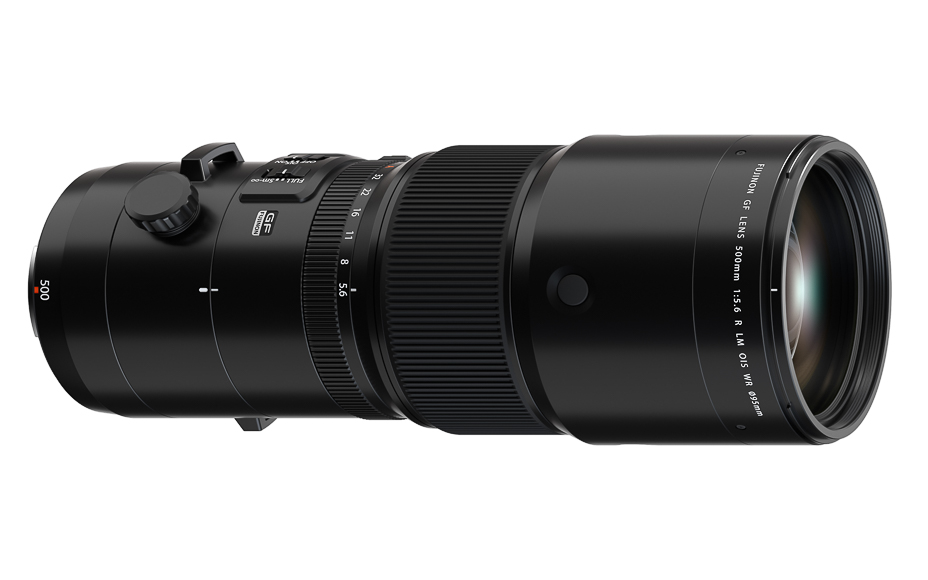
Fujifilm GF 500mm f/5.6 R LM OIS WR
Precision engineering delivers the optical brilliance of the 700mm (equivalent to 396mm in 35mm format) lens.
The GF 500mm f/5.6 packs 21 elements in 14 groups, including two Super ED and five ED elements, to suppress the chromatic aberration typically experienced in super telephoto lenses.
The lens also pairs with the Fujifilm Teleconverter GF 1.4X TC WR to extend the focal length to an almighty 700mm.
Fujifilm also claims that the OIS is superior and optimizes performance, especially in the intended genres of wildlife and sports.
The Fujifilm GF 500mm f/5.6 R LM OIS WR will launch on 17 June 2024 for around $6,100 AUD (4,090 USD).
The Latest 100MP Beast – Fujifilm GFX 100 S II
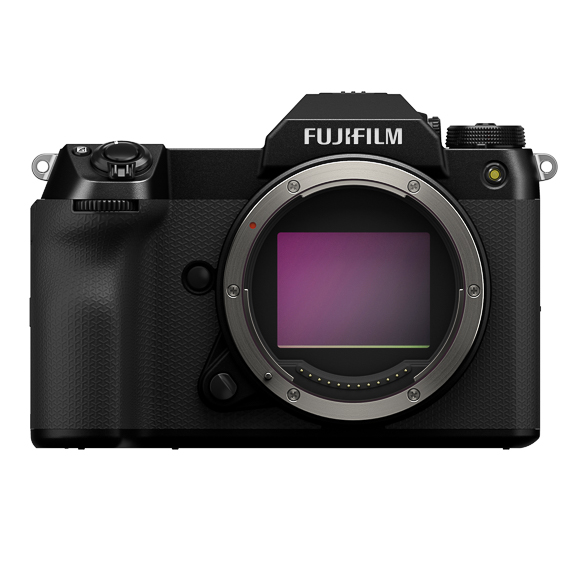
Fujifilm GFX 100S II
The final showstopper of the Sydney-based Fujifilm X Summit was the latest in the GFX large format cameras.
The Fujifilm GFX 100S II represents a generational leap to the highly popular GFX 100S launched in early 2021.
The GFX 100S II boasts a newly developed GFX 102MP CMOS II medium-format image sensor that captures stunning image resolution and file data.
Fujifilm’s high-speed X Processor 5 powers the best by driving AI-based subject detection, high-response autofocus, and a burst of up to 7fps.
In a GFX series best, the GFX 100S II delivers an incredible 8 stops of additional light through its 5-axis In Body Image Stabilization.
The new sensor design allows an extended ISO to 80, resulting in exceptional noise management and a wider dynamic range.
What was most interesting about the showcasing of this camera during the X Summit was Fujifilm’s messaging.
The GFX 100S II is the lightest GFX camera to date, weighing 883g (1.95lb).
It’s also a very compact GFX camera, and Fujifilm repeatedly promoted its portability and applications for both professional and enthusiast photographers wanting to explore large-format photography.
For videography, the latest GFX delivers paired-back 4K at 60p ProRes 4:2:2 10bit direct to SSD.
“The new GFX100S II is part of our flagship GFX System that is focused on changing the way photographers and videographers view Large Format Digital. Combining a new high-speed sensor with high resolution, fast AI-based subject detection and tracking, and up to 8 stops IBIS in a compact and lightweight body will allow for more practicality for photographers, videographers, and photo enthusiasts,” said Shaun Mah, General Manager of the Electronic Imaging & Optical Devices Division of FUJIFILM Australia.
The weather-sealed GFX 100S II offers a premium ergonomic experience thanks to its design sensibilities and new synthetic textured wrap – BISHAMON-TEX.
Another standout feature is the stunning, high-resolution electronic viewfinder (EVF), which boasts a 0.84x magnification and 5.76 million dots of image resolution.
Professional photographers will applaud Fujiiflm’s efforts to protect photographers’ content through their collaboration with the Coalition for Content Provenance and Authenticity(C2PA) and the Content Authenticity Initiative(CAI).
It’s still a work in progress, but it’s an essential aspect of online professional photography and content credibility.
The original Fujifilm GFX 100S retails for around $9,500 AUD ($6,350 USD).
The new and improved Fujifilm GFX 100S II will launch on 17 June 2024 and retail for around $8,700 AUD ($5,800 USD).
Wrapping Up Fujifilm X Summit 2024 Sydney
The Fujifilm X Summit 2024 allowed Fujifilm to demonstrate its commitment to novice and professional photographers.
Introducing a near-flagship model X-T50 and updated kit lens offering has answered many questions posed by Fujifilm fans.
However, it’s interesting that the Fujifilm X-T50, with its 40MP sensor and X Processors 5 HR, is close in price and performance to the X-T5.
Upon closer inspection, it’s clear that Fujifilm is refining more than its photography equipment offerings at an enthusiast and professional level.
Moving all cameras to the optimized 40MP image sensor, IBIS, and X Processor 5 makes sense from a manufacturing and cost-to-business perspective.
It’s also important to point out that the X-T50 and the X-T5 differ enough for pros to choose the latter.
In the GFX space, Fujifilm still lists three 100MP cameras and one 50MP camera as part of their flagship, larger format range.
Given Fujifilm’s move to the 40MP X Trans sensor with the X Series, will we see a similar move in the GFX range?
Will Fujiiflm drop the 50MP image sensor range and stay true to larger format 100MP image sensors?
With the launch of the significantly improved Fujifilm GFX 100S II, the original 100S is likely to be retired soon.
As an Australian, I was thrilled to see the announcement of such significant products at an X Summit in Sydney.
It was also great to see Australian photographers involved in the testing and promoting of Fujifilm products.
The Fujifilm X Summit 2024 revealed essential updates to the X and GFX series of cameras and lenses.
It begs the question of what is next for the Japanese imaging and optics specialist.
They’ve been doing this for 90 years – what’s in store for the next ten?
Can we expect an updated X-Pro4 with a 40MP X Trans CMOS image sensor, X Processor 5, and IBIS?
Or will we see a continuation of the lens road map, focusing on rebuilds of existing, older lenses?
Credit : Source Post



